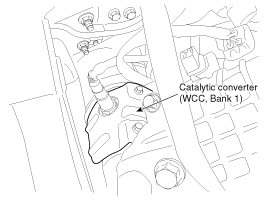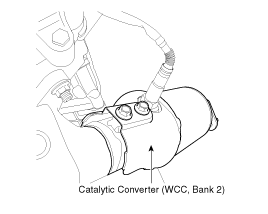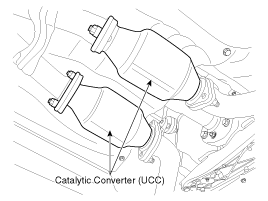 Hyundai Equus: Catalytic Converter Description and Operation
Second generation VI (2009–2024) / Hyundai Equus VI 2009-2024 Service Manual / Emission Control System / Exhaust Emission Control System / Catalytic Converter Description and Operation
Hyundai Equus: Catalytic Converter Description and Operation
Second generation VI (2009–2024) / Hyundai Equus VI 2009-2024 Service Manual / Emission Control System / Exhaust Emission Control System / Catalytic Converter Description and Operation
| Description |



 Description and Operation
Description and Operation
Description
Exhaust emissions (CO, HC, NOx) are controlled by a
combination of engine modifications and the addition of special control
components.
Modifications to the combustion chamber, int ...
 CVVT (Continuously Variable Valve Timing) System Description and Operation
CVVT (Continuously Variable Valve Timing) System Description and Operation
Description
Continuous Variable Valve Timing (CVVT) system advances or
retards the valve timing of the intake and exhaust valve in accordance
with the ECM control signal which is calculated by ...
See also:
Engine oil and filter
The engine oil and filter should be changed at the intervals specified in the
maintenance schedule. If the car is being driven in severe conditions, more frequent
oil and filter changes are requir ...
Purge Control Solenoid Valve (PCSV) Description and Operation
Description
Purge Control Solenoid Valve (PCSV) is installed on the surge
tank and controls the passage between the canister and the intake
manifold. It is a solenoid valve and is open when the ...
Crankshaft Position Sensor (CKPS) Description and Operation
Description
Crankshaft Position Sensor (CKPS) detects the crankshaft
position and is one of the most important sensors of the engine control
system. If there is no CKPS signal input, the engine ...
